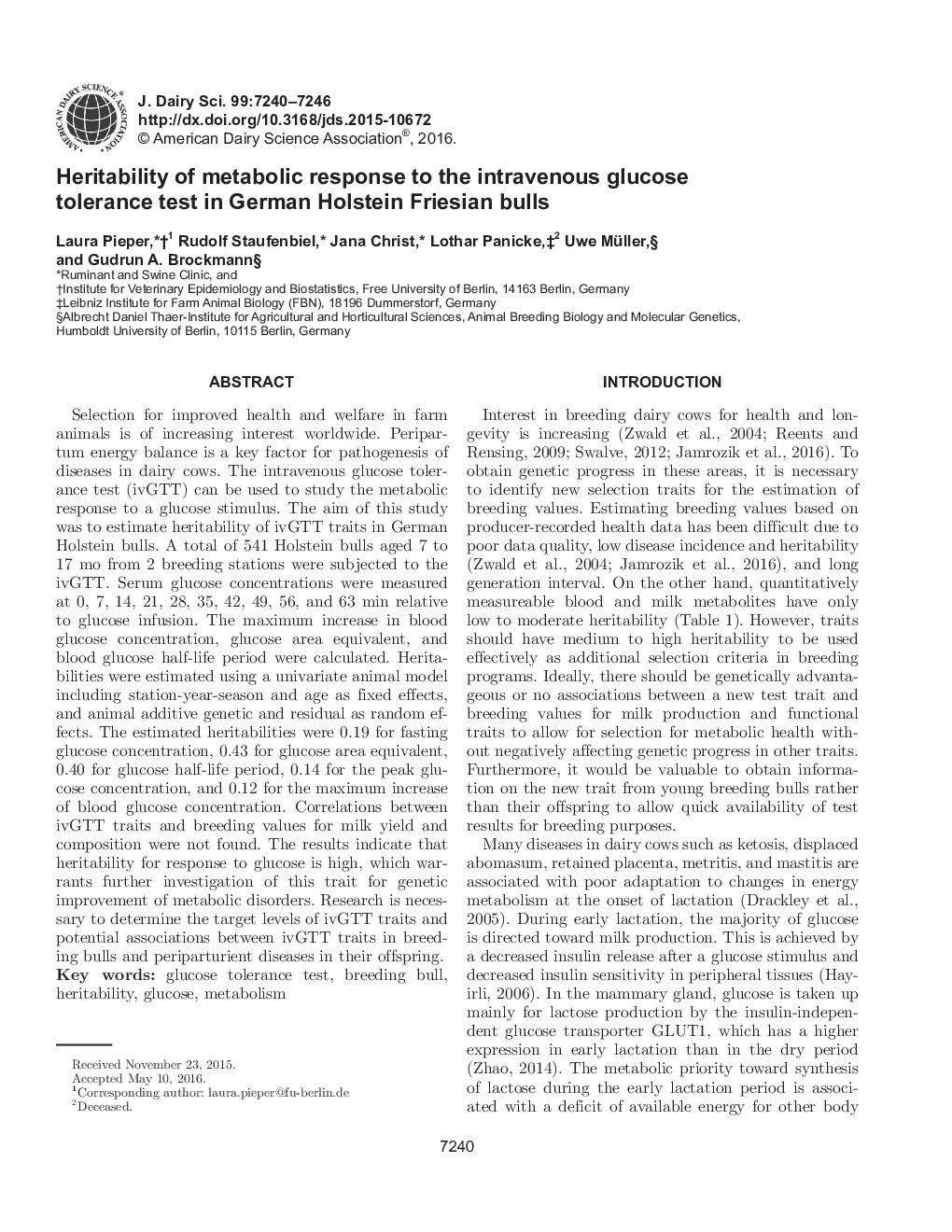| Article ID | Journal | Published Year | Pages | File Type |
|---|---|---|---|---|
| 5542833 | Journal of Dairy Science | 2016 | 7 Pages |
Abstract
Selection for improved health and welfare in farm animals is of increasing interest worldwide. Peripartum energy balance is a key factor for pathogenesis of diseases in dairy cows. The intravenous glucose tolerance test (ivGTT) can be used to study the metabolic response to a glucose stimulus. The aim of this study was to estimate heritability of ivGTT traits in German Holstein bulls. A total of 541 Holstein bulls aged 7 to 17 mo from 2 breeding stations were subjected to the ivGTT. Serum glucose concentrations were measured at 0, 7, 14, 21, 28, 35, 42, 49, 56, and 63 min relative to glucose infusion. The maximum increase in blood glucose concentration, glucose area equivalent, and blood glucose half-life period were calculated. Heritabilities were estimated using a univariate animal model including station-year-season and age as fixed effects, and animal additive genetic and residual as random effects. The estimated heritabilities were 0.19 for fasting glucose concentration, 0.43 for glucose area equivalent, 0.40 for glucose half-life period, 0.14 for the peak glucose concentration, and 0.12 for the maximum increase of blood glucose concentration. Correlations between ivGTT traits and breeding values for milk yield and composition were not found. The results indicate that heritability for response to glucose is high, which warrants further investigation of this trait for genetic improvement of metabolic disorders. Research is necessary to determine the target levels of ivGTT traits and potential associations between ivGTT traits in breeding bulls and periparturient diseases in their offspring.
Related Topics
Life Sciences
Agricultural and Biological Sciences
Animal Science and Zoology
Authors
Laura Pieper, Rudolf Staufenbiel, Jana Christ, Lothar Panicke, Uwe Müller, Gudrun A. Brockmann,
